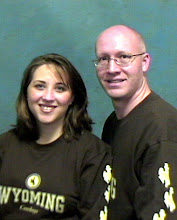Population explosion! That's what we were hoping for this past week. Since it takes 21 days from egg laying for an adult bee to emerge, we were just a few days short of seeing new bees during our last inspection, which occurred at about 22 days after the colonies were installed in their hives. (We figure it took a few days for the bees to draw enough comb for the queens to start laying.) With all that capped brood we had been seeing for a couple of weeks we were excited for all those new bees to start making their way out into the world.
One day last week- round about the 19th of May- we suddenly saw what looked like hundreds of bees outside the hives. It looked like they were all facing the hives flying left and right and up and down. This would be their orientation flight. The first time a bee leaves the hive they have to orient themselves to the hive so they can find it again. Somehow this orientation flight in front of the hive sets the little GPS in their brains so they can fly straight back to the hive even after they have been foraging 2 to 3 miles away. I tell you bees are amazing creatures! All those bees doing orientation flights could not have been the result of new bees emerging from their cells. They must have been bees from eggs that were laid shortly before the packages were sent to us. Bees do not leave the hive until about day 18 if their adult life. Worker bees go through several stages in which they have different responsibilities. You can read more about that here
http://en.wikipedia.org/wiki/Worker_bee#Progression_of_tasks if you would like. But, bees have been emerging from their cells and entering the world. It's a good thing too. The hive populations were getting pretty low but they should be growing on a daily basis, now.
As we got in to the inspection we found the old comb, where the capped brood used to be, had been vacated and new eggs were sitting in its place. There still was, of course, more capped brood and larvae in other parts of the comb. The comb that was once white now ranges from yellow to yellowish brown. We are assuming that the color change is from the pollen that the bees are bringing in. We are not sure, however, if they are still producing white comb that gets coated with pollen or if they are actually producing a different color comb from the pollen and nectar they are eating.
Other than more bees, neither Virginia nor Georgia had changed much from the previous week. With such low populations of bees there were just not enough bees to build comb on more frames. So Virginia still has most of the bottom deep filled with comb and a couple of frames in the upper deep and Georgia still has about 5 frames filled with comb in her single deep hive body. We will see where we go from here as more bees are "born".
One item worth noting in Georgia's hive was a peculiar looking cell. It looked a little too large to be a drone cell but not sure that it looked quite like a queen cell. Queen cells are cells in which queen bees develop. They are larger than drone cells and droop down- almost like a peanut. Like this:
We did not take this picture- we borrowed it from drone.cyberbee.net
Worker bees can "make" a queen from any egg (except a drone egg) they choose. They just have to feed the larvae Royal Jelly, a substance nurse bees produce, and viola! A queen is born!
There are two reasons workers would make a new queen. If the bees are out of room and the hive is too crowded, the workers will produce a new queen and the old queen will take half of the colony and "swarm". They will take off and find a new place to live. This would cut our colony and honey production in half. Not a good situation. These swarm cells typically show up on the bottom third of the frames. The other reason they might want a queen would be to replace the current queen. If the current queen is not getting the job done and laying the proper number or types of eggs, the workers might want to "supercede" her. These supercedure cells typically show up on the upper two thirds of the frames.
Now this cell that we saw in Georgia's hive was on the bottom of the frame- I think. This would make it a swarm cell. But Georgia has plenty of room with only 5 frames drawn out in comb. We have wondered about Georgia's queen as she is lagging behind Virginia and thought that the workers might want to supercede her. In any case, if it even was a queen cell, we figured it would still be there next week and we could take a better look and decide what to do about it at that time. But let's be optimistic and, for now, say that it is just a drone cell and all is well.
Last of all- we have found our new smoker fuel! We switched form natural fiber twine to cedar chips from a bag of pet litter we got at the grocery store. We got a few coals going in the bottom and packed in the cedar chips. It smoked well the entire time! When the chips got a little low it was easy to put in another handful. Besides that, the smoke just smelled so good!
We will inspect again later this week and update some more then. Bye.



















